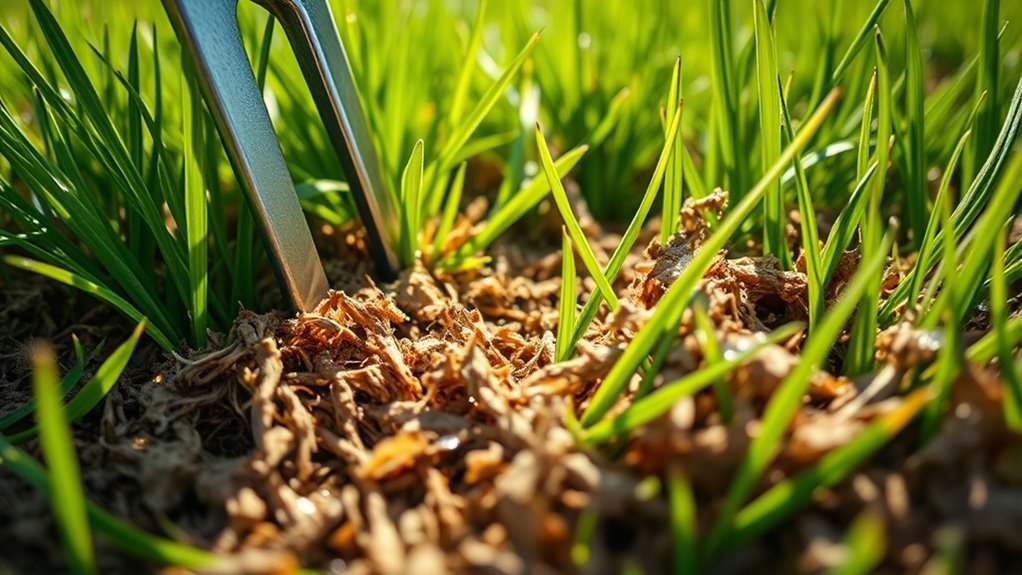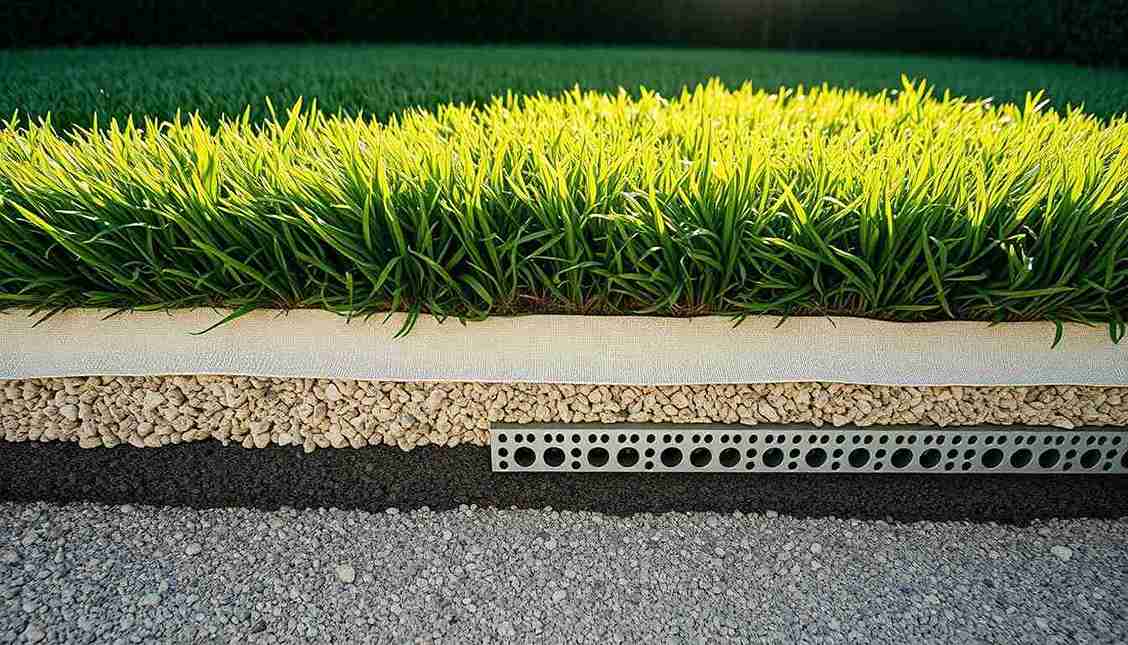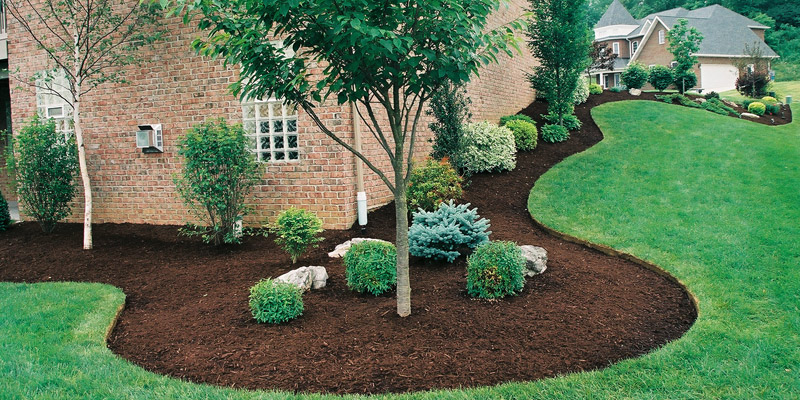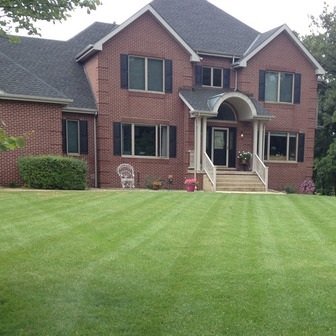Modern lawn sprayers deliver precision coverage through advanced nozzle technologies and customizable pressure systems. You’ll find top performers like the Toro RapidSet and Rain Bird 5000 Series offering uniform water distribution with gear-driven rotation mechanisms. For smaller areas, choose 1-2 liter handheld units, while larger properties benefit from 4+ gallon backpack sprayers with battery power. Select adjustable spray patterns and interchangeable nozzles to optimize your watering efficiency. Our detailed analysis reveals key features that’ll transform your irrigation strategy.
Essential Features for Modern Lawn Sprayers

When selecting a modern lawn sprayer, several essential features work together to guarantee effective irrigation and long-term performance. You’ll want to focus on heavy-duty construction materials like stainless steel or impact-resistant plastic that safeguard your sprayer features remain durable through constant use and weather exposure.
Modern backpack sprayers come equipped with adjustable spray mechanisms that let you customize water pressure and spray patterns for different areas of your lawn. You’ll find these adjustable spray options particularly useful when targeting specific zones that need varied precipitation rates. To maintain ideal performance, keep your sprayer’s nozzles clear of debris and monitor the system regularly for leaks. The best sprayers combine uniform water distribution with flexible design elements, helping you avoid common issues like overwatering while achieving consistent coverage across your entire lawn.
Understanding Sprayer Tank Capacities
Your sprayer’s tank capacity directly impacts your application efficiency, with handheld units offering 1-2 liters for small tasks while backpack models provide 4+ gallons for extensive coverage. You’ll find pump-powered sprayers in the 2-3 gallon range, striking an ideal balance between portability and coverage for medium-sized properties. When selecting your tank size, consider your yard’s square footage and application frequency to minimize refills while maintaining comfortable maneuverability.
Optimal Tank Size Ranges
Selecting the right tank capacity for your lawn sprayer greatly impacts both efficiency and user comfort. For small gardens under 500 square feet, you’ll find that a 1-2 liter handheld sprayer provides sufficient coverage without excess weight. If you’re maintaining a medium-sized lawn or garden, opt for a 2-3 gallon pump sprayer that balances portability with reduced refill frequency.
For properties exceeding a quarter acre, you’ll want to examine a 4+ gallon backpack sprayer. While manual pumping models are cost-effective, battery-powered sprayers offer consistent pressure and reduced fatigue during extended use. Your tank size choice should align with your application frequency – larger tanks minimize refills for regular treatments, while smaller units better serve occasional spot treatments. Evaluate upgrading to battery power if you’re treating large areas weekly.
Matching Capacity to Jobs
Tank capacity directly correlates to spraying efficiency and project completion time. You’ll need to match your sprayer’s capacity to your specific lawn or garden requirements to guarantee ideal performance and minimize refills.
| Garden Size | Recommended Sprayer | Capacity | Best Use |
|---|---|---|---|
| Small Areas | Hand Sprayer | 1-2L | Container Plants |
| Medium Yards | Pump Sprayer | 2-3 Gal | Vegetable Patches |
| Large Lawns | Backpack Sprayer | 4+ Gal | Open Areas |
| Commercial | Powered Sprayer | 5+ Gal | Multiple Properties |
For container gardens and small patches, you’ll find a 1-2 liter hand sprayer sufficient. Medium yards demand a 2-3 gallon pump sprayer for efficient water distribution. If you’re managing larger areas, invest in a 4+ gallon backpack sprayer to reduce refill frequency. Consider battery-powered options for extensive properties where manual pumping isn’t practical.
Advanced Nozzle Technologies and Spray Patterns
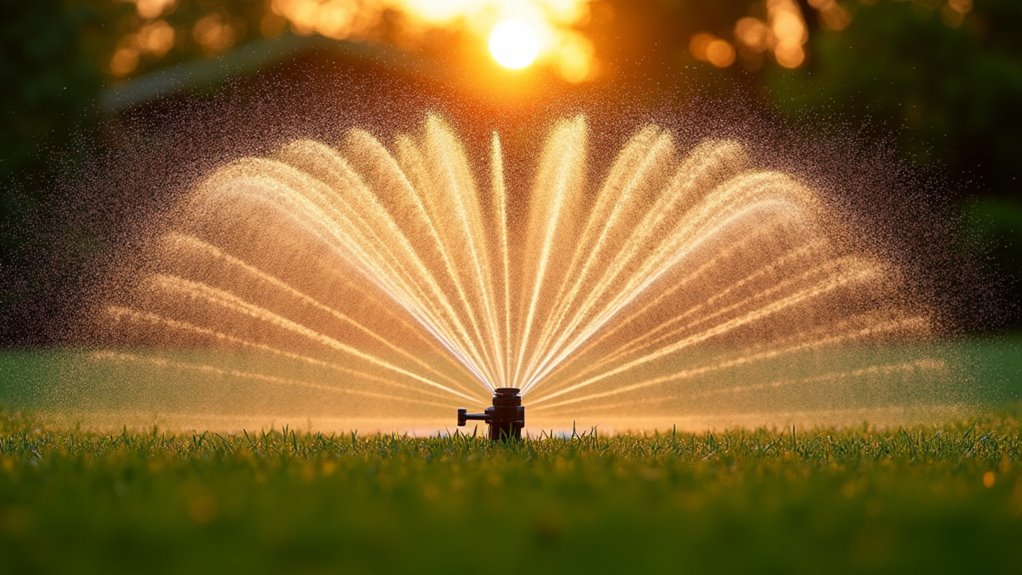
Modern sprinkler systems utilize advanced nozzle technologies to deliver precise, uniform water coverage across lawns of any size or shape. You’ll find gear-driven rotary mechanisms, like those in the K Rain SuperPro, that guarantee smooth operation while minimizing water waste and preventing uneven distribution.
Today’s adjustable nozzles give you complete control over water flow and spray patterns, adapting to your lawn’s specific requirements. With patented technologies from industry leaders like Rain Bird, you’re getting consistent coverage that eliminates dry spots and overwatering. For maximum versatility, look for systems with interchangeable nozzle options, such as the Hunter PGP series. These allow you to optimize spray coverage based on your terrain’s unique characteristics, ensuring efficient water usage while maintaining healthy grass growth.
Battery-Powered Vs Manual Operation Systems
When choosing between lawn sprayer types, you’ll find distinct advantages in both battery-powered and manual operation systems. Your decision should depend on the size of your coverage area and specific garden sprayer needs.
Selecting the right lawn sprayer means weighing battery versus manual options, with your yard size and intended use guiding the choice.
- Battery-powered sprayers maintain consistent pressure for 2-4 hours, ideal for large lawn sprinkler applications without manual pumping
- Manual hand sprayers offer lighter weight and bolstered maneuverability, perfect for targeted garden treatments
- Battery units require more maintenance, including motor cleaning and battery charging
- Manual pressure sprayers need periodic pumping but feature simpler maintenance requirements
- Cost considerations favor manual systems for small gardens, while battery-powered units prove more efficient for extensive coverage
Consider your property size, use frequency, and maintenance comfort level when selecting between these systems. Each type delivers specific benefits that can optimize your lawn care routine.
Top-Rated Sprayer Models and Brands
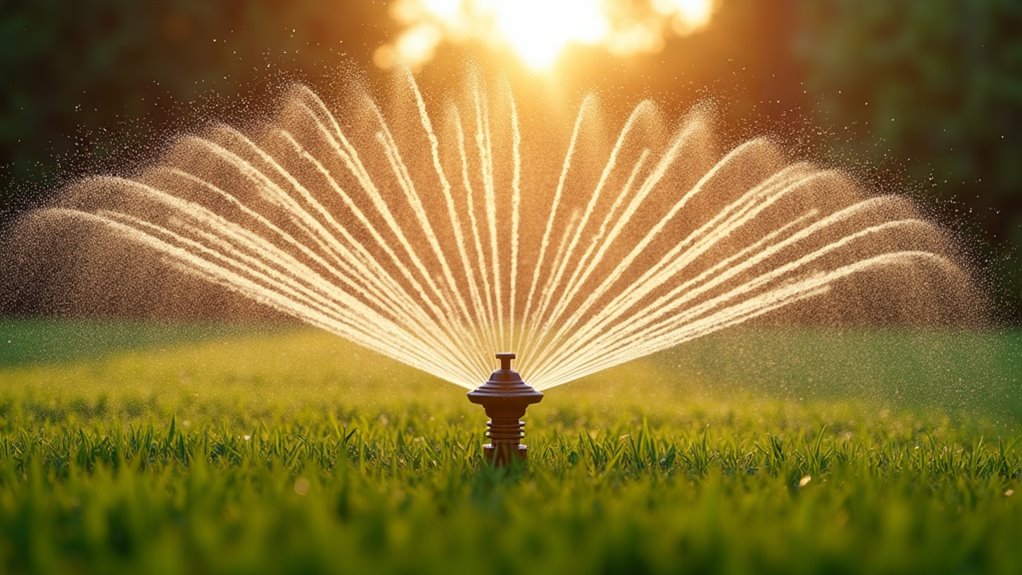
Leading brands like Toro RapidSet and Rain Bird 5000 Series stand out with their precision rotation technology and uniform water distribution features, offering you exceptional coverage for your investment. You’ll find Hunter’s PGP ADJ 4 delivers outstanding efficiency with its 12 interchangeable nozzles and low-volume design, while K Rain SuperPro‘s gear-driven system provides professional-grade durability at a competitive price point. These premium models utilize advanced engineering in their spray patterns and pressure regulation, giving you measurable advantages in water conservation and coverage consistency compared to basic sprinkler systems.
Premium Brand Performance Analysis
Top-performing lawn sprinkler brands consistently demonstrate superior engineering through their flagship models. When you’re covering a large area, you’ll find these garden sprayers deliver precision water distribution through advanced rotary technology and specialized spray nozzle designs.
- Hunter PGP ADJ 4’s 12 interchangeable nozzles provide eco-conscious water management for different types of lawn and garden layouts
- Toro RapidSet’s rotating mechanism optimizes coverage while minimizing water waste and ground runoff
- Rain Bird 5000 Series offers customizable spray patterns through their patented nozzle technology
- K Rain SuperPro’s gear-driven system guarantees durability with smooth operation
- Orbit Impact’s zinc and brass construction delivers reliable performance across a 90-foot diameter
These sprayers come with specific performance advantages that address multiple irrigation challenges, from water conservation to coverage uniformity.
Water Distribution Technology Features
Modern water distribution technology stands at the core of these premium sprinkler models’ success. You’ll find each sprayer includes advanced features to make certain your lawn receives optimal coverage. From Toro’s RapidSet precision rotation to Hunter’s interchangeable nozzles, these systems deliver fine mist to long spray patterns that comfortably carry across large areas.
| Model | Coverage Type | Key Technology |
|---|---|---|
| Rain Bird 5000 | Multi-pattern | Patented uniform distribution |
| K Rain SuperPro | Rotary | Gear-driven dispersion |
| Hunter PGP ADJ 4 | Adjustable | 12-nozzle interchange |
The industry’s leading manufacturers have integrated sophisticated rotation mechanisms and precision-engineered nozzles to maximize efficiency. These innovations guarantee consistent water distribution while minimizing waste and runoff, making them ideal for professional-grade irrigation systems.
Cost-Value Sprayer Comparison
When comparing the industry’s most efficient sprayers, your investment directly correlates with performance and durability. You’ll find the best value in models that combine ergonomically designed features with reliable water distribution technology.
- Rain Bird 5000 Series offers the most beginner-friendly setup with multiple nozzle options and a comfortable grip, making it ideal for manual pump operation
- Toro RapidSet delivers premium performance with its rotating technology, justifying its higher price point
- Hunter PGP ADJ 4’s 12 interchangeable nozzles provide excellent versatility for the cost
- K Rain SuperPro sprayer offers superior durability with its heavy-duty construction and pressure regulation
- Orbit Impact Sprinkler provides the best value for large coverage areas, featuring a sturdy tripod base and chemicals without compromising performance
Choose based on your specific needs, as each model balances cost against unique features and coverage capabilities.
Water Conservation and Coverage Efficiency
Smart water management starts with selecting lawn sprayers that deliver precise, uniform coverage while minimizing waste. You’ll want to buy the best sprayers that allow the user to control water distribution through adjustable nozzles and rotating technology. Modern systems like the Toro RapidSet and Rain Bird’s patented designs come with five different spray settings to match your garden’s specific needs.
| Feature | Benefit |
|---|---|
| Low Precipitation | Reduces runoff, saves water |
| Adjustable Nozzles | Customizable coverage patterns |
| Rotating Technology | Even distribution across lawn |
| Smart Flow Control | Minimizes water waste |
To make your system easier to use, look for sprayers that incorporate uniform water distribution at lower volumes. Remember to regularly clean the sprayer nozzles to maintain ideal performance and prevent uneven coverage that could lead to water waste and patchy lawn areas.
Maintenance Tips for Long-Term Performance
Regular maintenance of your lawn sprayers guarantees peak performance and extends their operational lifespan. A tank sprayer is a great investment when properly maintained, and you’ll optimize its efficiency with consistent care.
- Clean your sprayer thoroughly after each use with soap and water, making certain no chemical residue remains
- Flush the system with clean water multiple times to prevent nozzle clogs and internal corrosion
- Inspect O-rings, seals, and gaskets monthly for wear and replace them as required
- Store your sprayer in a dry, temperature-controlled environment to prevent damage to components
- Keep manufacturer’s documentation and customer service contacts handy for troubleshooting and parts replacement
When you use a sprayer properly and follow these maintenance protocols, you’ll dramatically reduce equipment failures and ensure consistent spray patterns throughout multiple seasons.
Safety Considerations and Best Practices
Safety protocols are vital when operating lawn sprayers to protect both the operator and the environment. When handling weed killers and pest control solutions, you’ll need to wear proper protective clothing, including gloves, safety goggles, and a respirator mask to prevent chemical exposure.
Before starting any weed control application, check wind conditions to avoid chemical drift that could damage neighboring vegetation. For ideal safety considerations during spraying operations, you’ll want to maintain your equipment properly. After each use, flush your sprayer thoroughly with clean water, and when dealing with caustic weed killer solutions, use appropriate neutralizing agents to prevent corrosion. Store your sprayer in a temperature-controlled environment to protect it from frost damage and extend its useful life. These practices safeguard both your safety and equipment longevity.
Expert Recommendations and Field Tests
Through extensive field testing and professional evaluations, leading irrigation experts consistently recommend five top-performing lawn sprayer models for ideal water distribution. Whether you’re maintaining a small garden or large lawns, these sprayers on the market deliver exceptional results with varying gallons of liquid output.
Professional irrigation experts have identified the best lawn sprayers through rigorous testing, ensuring optimal water distribution for any garden size.
- Hunter PGP ADJ 4’s 12 interchangeable nozzles allow you to adjust spray patterns while minimizing water waste
- Toro RapidSet’s rotating technology guarantees uniform coverage, perfect for any garden or home application
- Rain Bird 5000 Series offers customizable spray patterns with superior distribution efficiency
- K Rain SuperPro’s gear-driven system provides lasting performance and consistent coverage
- Orbit Impact Sprinkler’s adjustable tripod base delivers professional-grade coverage up to 90 feet
Field tests confirm these models excel in durability, coverage uniformity, and water conservation, allowing each user to adjust settings for maximum performance.
Frequently Asked Questions
Can Lawn Sprayers Be Used for Applying Liquid Fertilizers and Pesticides?
You can effectively use lawn sprayers for fertilizers and pesticides, but you’ll need to pay attention to chemical application rates and spray pattern adjustments to guarantee proper coverage. When choosing a sprayer, consider tank capacity options that match your yard size and nozzle type comparisons for different solutions. You’ll want to monitor pressure regulation settings for consistent flow and, if using battery-powered models, keep battery life concerns in mind for uninterrupted application sessions.
How Long Does It Take to Spray an Average Quarter-Acre Lawn?
You’ll typically need 15-20 minutes to spray a quarter-acre lawn effectively, though spray time estimates can vary based on your water flow adjustments and spray nozzle options. To enhance water coverage efficiency, you’ll want to maintain consistent spray pattern consistency while walking at a steady pace. Your lawn size calculations matter – divide the area into manageable sections and work systematically. For best results, you should adjust your spraying speed based on terrain and vegetation density.
Are Replacement Parts Readily Available for Most Popular Sprayer Models?
You’ll find replacement parts readily available for most major sprayer brands through authorized dealers and online marketplaces. Parts availability varies by model, but leading manufacturers maintain extensive inventories to support maintenance requirements and guarantee spray pattern consistency. Focus on sprayers with high durability ratings and simple user interfaces to minimize repair needs. When selecting a model, consider storage considerations and check if the manufacturer offers detailed parts diagrams and easy-order systems for replacements.
Do Weather Conditions Affect the Sprayer’s Electronic Monitoring System Accuracy?
Yes, weather conditions can considerably affect your sprayer’s electronic monitoring accuracy. Temperature sensitivity in sensors may cause misreadings, while strong wind gusts impact flow measurements. You’ll notice water pressure fluctuations during storms affecting gauge reliability. Chemical residue buildup and nozzle clogging issues can worsen in humid conditions, interfering with sensor readings. Even electromagnetic interference from nearby power lines can disrupt digital displays. Regular calibration helps maintain accuracy in challenging weather.
Can Multiple Users Create Individual Spray Settings on the Same Connected Device?
You’ll find most modern sprayers with smartphone app integration allow multiple user profiles, each storing unique spray pattern customizations and flow rate adjustments. Through remote control functionality, you can create personalized settings that won’t interfere with other users’ preferences. Keep in mind that running multiple profiles simultaneously may impact battery life duration, so you’ll want to monitor your rechargeable battery options carefully. Most systems support up to 4-6 distinct user profiles.


